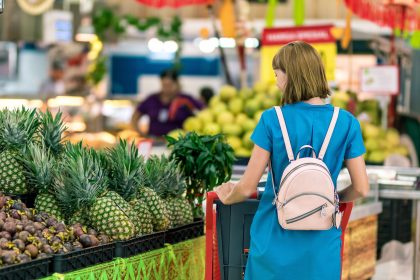
From grocery delivery to functional ingredients, consumer demands are defining American’s grocery lists. Today’s average grocery shopper is shopping more, but in smaller quantities. They’re also on the hunt for functional products that they’ve read about on social media.
Adapting to these trends is important for fermentation brands. As fermentation enters the mainstream, fermented food and drink brands need to focus marketing efforts on educating consumer’s on fermentation’s health benefits.
Here are 10 grocery store trends reshaping the way Americans buy food.
- Quick Trips Become Standard Instead of Stockpiling
Consumers don’t go to the grocery store once a week for an hour to buy everything on their list. They’re stopping in the grocery store multiple times a week for quick as-needed trips. According to Nielsen, 10 percent of shoppers buy just the ingredients for the meal they plan to have that day.
- Functional Foods Core of Shopping Lists
Consumers want food that heals (gut bacteria restoration, weight management), food that meet dietary needs (gluten free, sugar free) and food packed with functional elements (energy booster, stress reducer). Nearly two-thirds of American adults say healthfulness has a significant impact on their food and beverage purchases, according to the Institute of Food Technologists. The sales of functional foods totaled $247 billion in 2018.
- Private Label Products Grow
Private labels are growing in popularity – eight in 10 Americans buy private label products frequently or occasionally, according to IRI Consumer Connect. Private label is especially popular with younger consumers; 92 percent of millennials buy private label products to save money (compare that to 86 percent of Generation Xers, 81 percent of Baby Boomers and 77 percent of seniors). Private sales increased 5.8 percent in 2018 compared to 1.5 percent for national brands.
- More Fresh Food Options
Shelf-stable food – like protein bars, pasta sauces, salad dressings and sauerkraut – are getting much fresher alternatives. Brands are turning traditional shelf-stable food into refrigerated varieties that are packed with healthier ingredients and less preservatives.
- In-Store Experiences Elevate Displays
Stores and brands are keeping customers in the store by turning grocery shopping into an experience. Unique displays, samples and cooking demonstrations are making grocery shopping personal.
- Smaller Stores Become Commonplace
As malls collapse and strip malls anchor spaces are given to entertainment and lifestyle stores, the grocery store footprint is shrinking. Nielsen found smaller stores account for 25 percent of FMCG (fast-moving consumer goods) sales and 70 percent of shopping trips.
- Omnichannel Sales Diversify Grocers
Catering to the busy consumer, retailers are adding multiple channels to the shopping experience, like grocery delivery, in-store pickup and online shopping. According to Nielsen and Rakuten Intelligence, in-store grocers still remain king with $413 billion in sales in 2018. But online grocers netted $21.6 billion in sales, almost half (48 percent) in click-and-collect, pickup purchases. Though e-commerce sales are smaller than in-store sales, e-commerce has 40 percent year-over-year dollar growth.
- Rise of Natural & Organic Industry
Once specialty items only found in small nutrition shops, today natural products are the new normal for consumers. Annual consumer sales in 2018 were $219 billion across the natural and organic products industry, a 7 percent increase.
- Shopper Data Mined and Personalized
Outside of sales, stores will use loyalty programs and in-store AI machine learning to capture customer data and habits. That data will maximize product recommendations and coupons for customer’s future in-store and online purchases.
- Social Media Influence Food Purchasing Decisions
More shoppers are turning to social media in the purchase cycle. Nielsen found 35 percent of consumers use social media to aid in their purchasing decisions, while 26 percent said they discovered new products on social media.
